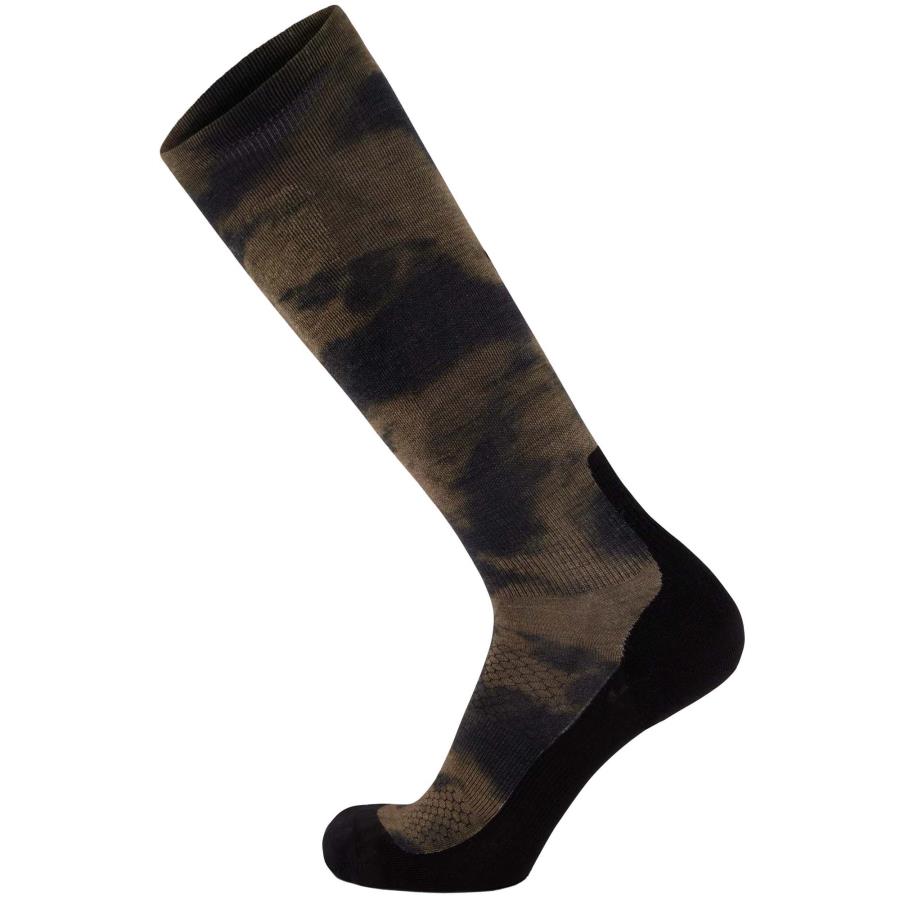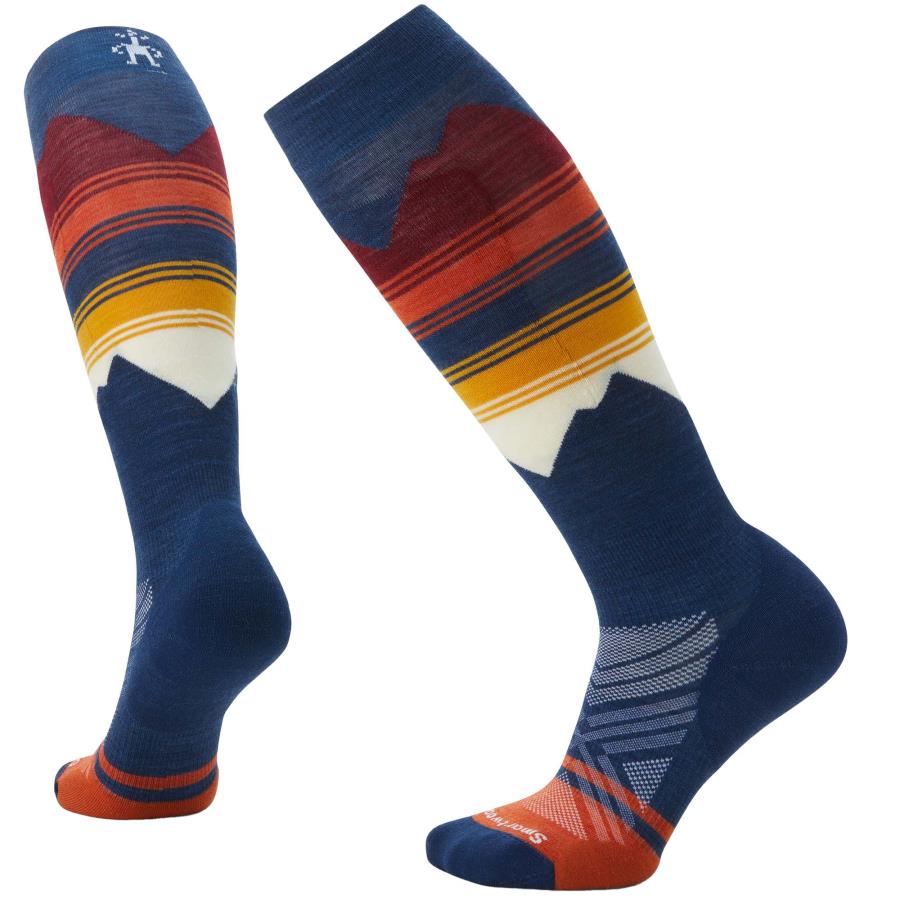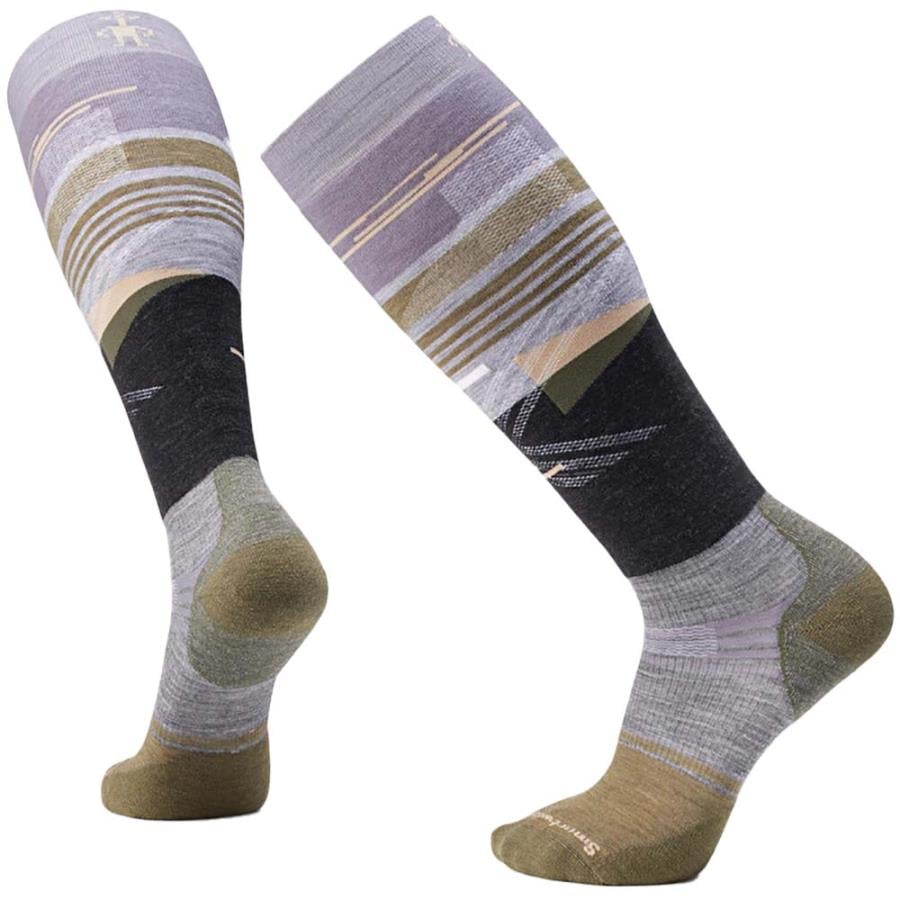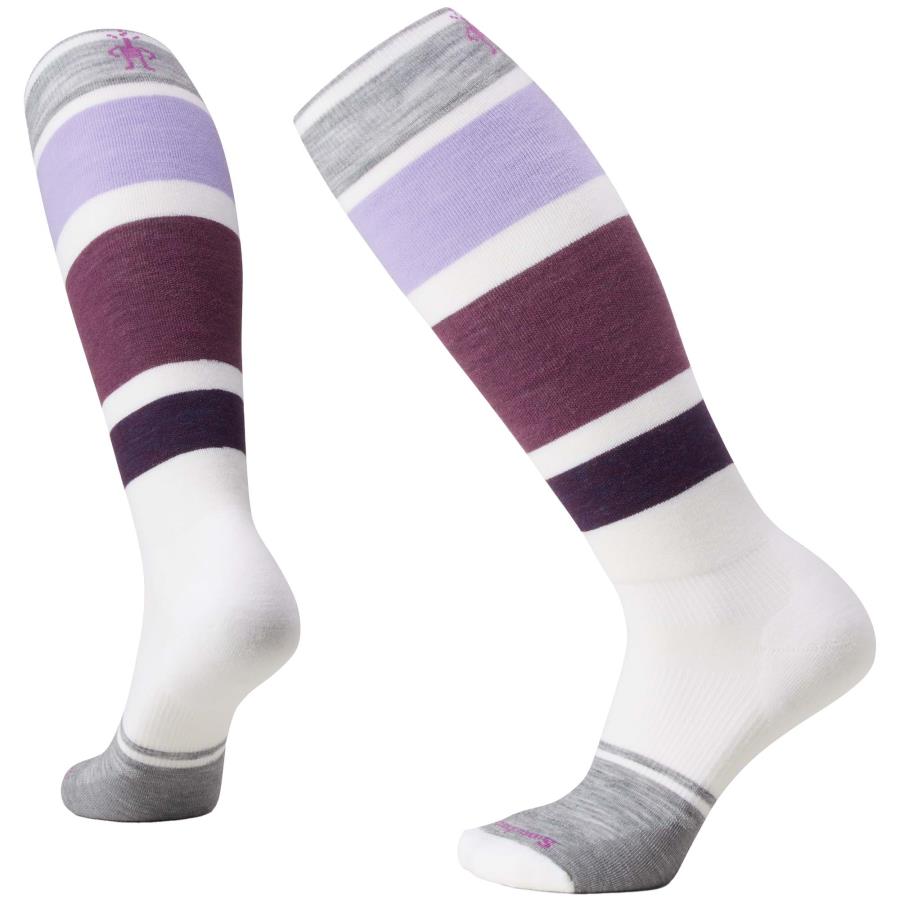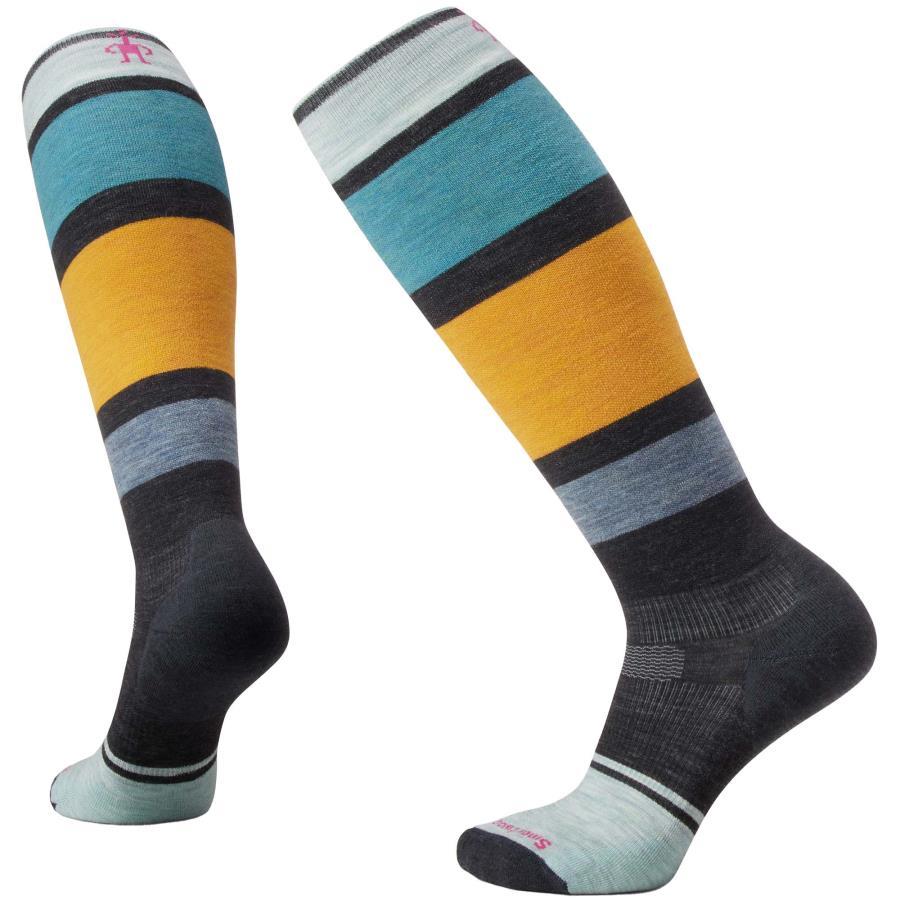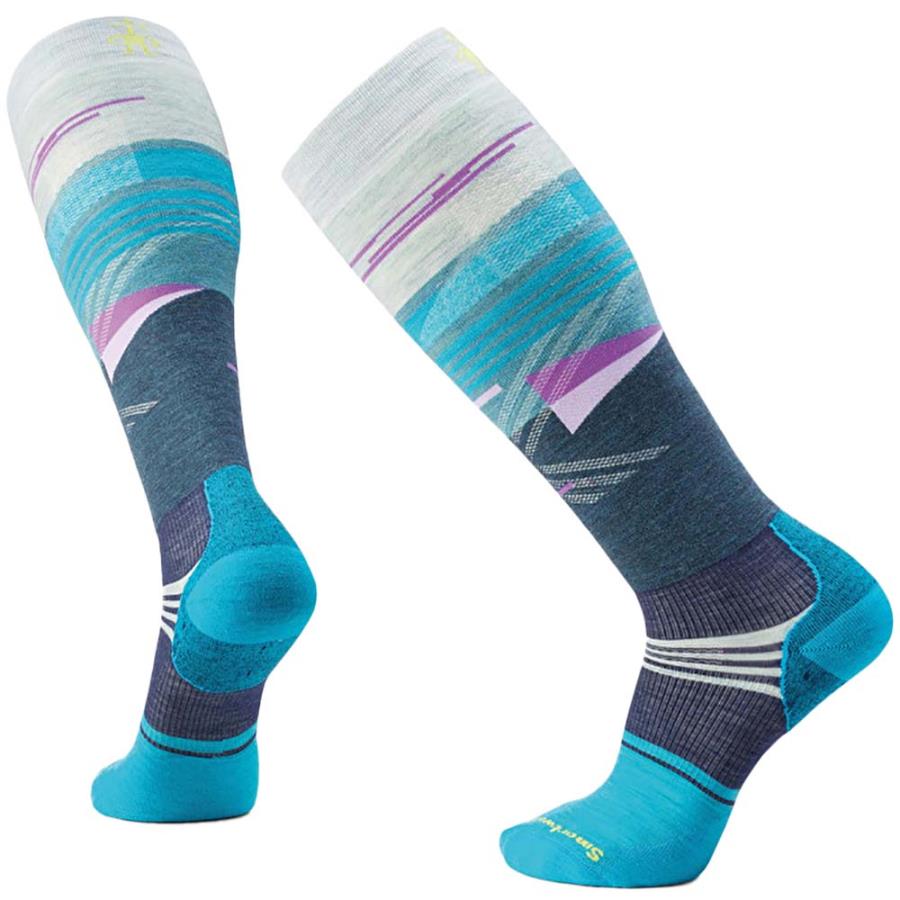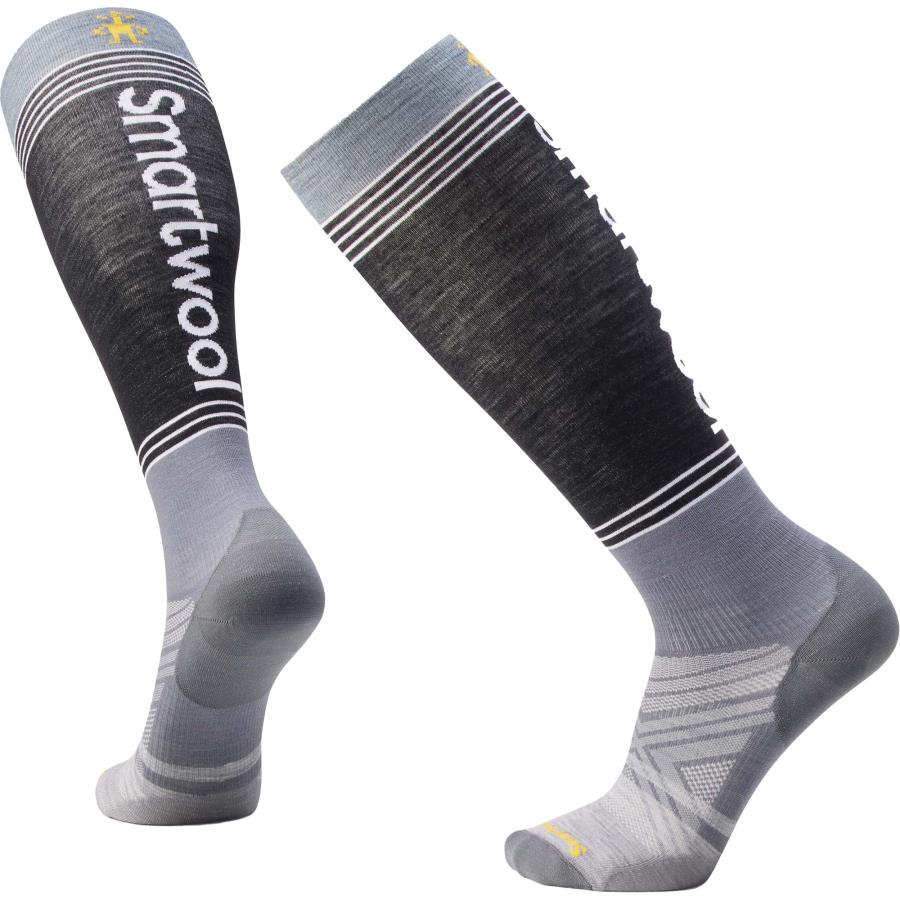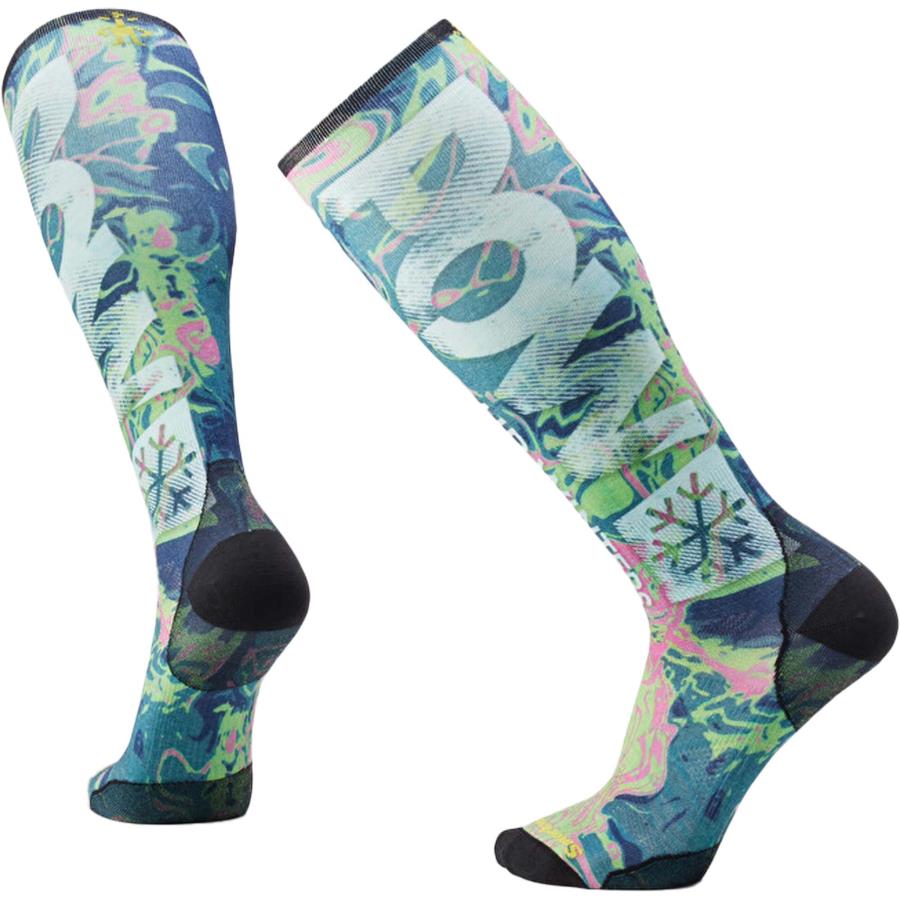The Absolute Guide to Buying Ski & Snowboard Socks
.webp)
Socks are one of the most important and understated parts of your ski or snowboard gear. A pair of uncomfortable or poor quality socks can easily ruin an otherwise perfect day on the slopes. Our guide below details everything you need to be aware of when choosing your Snowboard Socks and Ski Socks and what to look out for.
Ensuring a correct fit is paramount when it comes to Snowboard Socks and Ski Socks. A sock that is too small can feel tight, restrictive and uncomfortable whilst a sock that is too large can bunch up, pinch and cause painful pressure points. If you have chosen an ergonomic sock it is important to get the correct size to ensure the built in support is in the correct area of your foot. Cheaper socks are often a 'One Size Fits All' size or have a size range which covers several foot sizes.
More expensive socks usually have more focused size ranges, often covering a whole and half size only before moving up to the next size in the range. The easiest way to choose the correct size is to go off of your normal every day foot size. If you are on a size boundary it can be more difficult to choose the right size. We would recommend going for the smaller size if you want a tighter more performance oriented fit, or moving up to the bigger size if you want a looser, more comfort oriented fit.
It is important when wearing ski or snowboard socks to only wear one pair. Wearing two pairs of socks can be bad for your feet and is more likely to give you blisters and uncomfortable pinch points, as well as causing you to waste energy when flexing in your boots. If you wear two pairs of socks because you get cold feet it is much better to invest in a better quality ski or snowboard sock. If you wear two pairs to make your boots fit you then it is much better to invest in correctly fitting boots, or at the very least in a volume reducing insole.
Tube socks are the most basic ski and snowboard socks you can buy. They are a long elasticated tube which has a toe cap sewn on one end to close it up.
The top of the sock will be elasticated to prevent it from sliding down your leg. Tube socks have no left or right foot and have no top or bottom. Tube socks are often not gender specific other than in the colours offered. Children's tube socks will differ from adult's tube socks as they will have a shorter leg section to account for the fact that children's legs are shorter than adults in comparison to their foot size.
Tube socks offer simple comfort without a big price tag and are great for children or people who ski or snowboard very occasionally.

Ergonomic Socks are anatomically shaped to ensure maximum comfort and performance. Ergonomic socks have a left and a right foot shape meaning they must be worn on the correct foot. Ergonomic socks will often have features such as an angled toe box which accomodates the longer length of your big toes and shorter length of your little toes and specific shaping around the arch, instep and ankle.
Ergonomic socks usually have smaller size increments which will cover a whole and half size only (eg. 7-7.5 then 8-8.5 etc.) This means that they have a more comfortable fit with less stretching or bunching of the fabric. Ergonomic socks are better for people who want comfort and performance from a sock. Wearing ergonomic socks can make a huge difference to your riding.

Different fabrics have different degrees of comfort and moisture wicking properties. Better quality fabrics such as Merino wool can vastly improve the performance that a sock gives.
Synthetic materials include Polyester, Nylon, Acrylic, Elastic, Lycra, Spandex, Polypropelene, Polyamide, Elastane and more. Sythetic materials can be combined, allowing manufacturers to create ski and snowboard socks which retain their shape even after use and have great moisture wicking properties. The most popular synthetic materials used in ski and snowboard socks are Polyester, Nylon, Acrylic, Elastic and Lycra.
Polyester provides a good moisture managemnet with a soft touch for comfort. Nylon is a very durable material and is most often used to reinforce high wear sections of socks such as the shin or heel. Nylon also has good antibacterial properties meaning odors are held at bay. Acrylic is used as a wool substitute due to its soft touch and light weight. Acrylic has good shape memory menaing it is less likely to wrinkle or bunch. It is also nice and warm. Elastic and Lycra are used to keep the fit in socks. Used correctly these materials stretch for comfort without bunching or moving around.
Wool is unique in that it is the only natural fibre which wicks moisture. This means you get a warm and comfortable sock which is durable and dry. Wool has less elastic memory than synthetic fibres meaning wool ski and snowboard socks can lose theor shape over time. Wool also tends to be bulkier than synthetic ski and snowboard socks.
Merino wool comes from a specific breed of sheep prized for its high quality wool. Merino wool is exceptionally soft, warm and breathable making it very comfortbale. It also wicks moisture very well and doesn't build up odor as easily as synthetic materials do. This means you can wear a pair of Merino ski or snowboard socks for longer between each wash.
Merino wool maintains its shape better than normal wool meaning it is usually found in higher quality socks.
Most ski and snowboard socks are made from a blend of materials rather than just one. This allows manufacturers to get the best performance possible out of each fabric such as using Polyester for its comfort, Nylon for its durability and Acrylic as a substitute to wool. Each of our sock listings will tell you the blend of materials used.
As ski and snowboard boot constructions have improved, insulation from the cold is no longer the primary purpose of a sock. Fabric weight plays a big part in the comfort and performance of a ski or snowboard sock.
Lightweight socks offer the highest level of performance. This is because the thinner material of a lightweight sock gives less than a thicker sock meaning energy is transfered from your body to your skis or snowboard with less waste. Lightweight socks are favoured by athletes and high performance skiers and snowboarders for the increased control and feel you get from your equipment.
Lightweight socks can also work well for people who get hot feet or who ski mostly at the beginning or end of a season when the weather is warmer.

Midweight ski and snowboard socks are the most popular weight of socks. This is because they offer a good balance between comfort, warmth and performance. This balance makes them ideal for most skiers and snowboarders.

Heavyweight ski and snowboard socks are the thickest socks available. With thicker padding they offer a much more comfort oriented fit than lightweight or midweight socks. This makes them ideal for beginners or recreational skiers and snowboarders or people who find they get cold feet.

Cushioning in ski and snowboard socks is key to improving comfort. A high quality sock will provide padding and cushioning in high impact or high pressure areas, usually around the boniest parts of the foot such as instep and ankle. Ski socks tend to have more padding on the shin to prevent shin bang on the front of your boots. If you find that ski or snowboard socks can be uncomfortable then it is often best to invest in a good quality sock which provides key area padding or cushioning. This can alleviate pain or discomfort.
Support in a ski or snowboard sock can increase comfort and performance by reducing the distortion of your foot. Arch support is the most common support feature found on socks and comprises a thicker, tighter or stretched fabric section around the foot at the arch.
This helps hold the shape of your foot much more naturally and prevents uncomfortable or unnatural flexing of the foot inside a ski or snowboard boot. Other support features include ankle or Achilles support.
Some socks are made with sport specific features. This is due to the construction differences between ski and snowboard boots as well as the performance differences needed. For example a ski touring sock will have different padding to an alpine ski sock. Ski specific socks will often have more padding in the shin area to prevent shin bang.
Although it is not essential to get a sock that is specific to your sport it is often more comfortable to get one that is.
Socks do come with gender specific features. Women's Socks usually have a shorter leg section whereas Men's Socks will have a longer leg section. This is due to the anatomical differences between men and women.
It is not essential to get a sock that is specific to your gender however you will find that would be more comfortable to get one that is.
Check out our latest snowboard socks
Check out our full range of Snowboard Socks and Ski Socks today!
Need further advice? We're here to help!
Check out our Buying Guides for technical tips and tricks.
Visit our Help Centre to speak to our experts.
